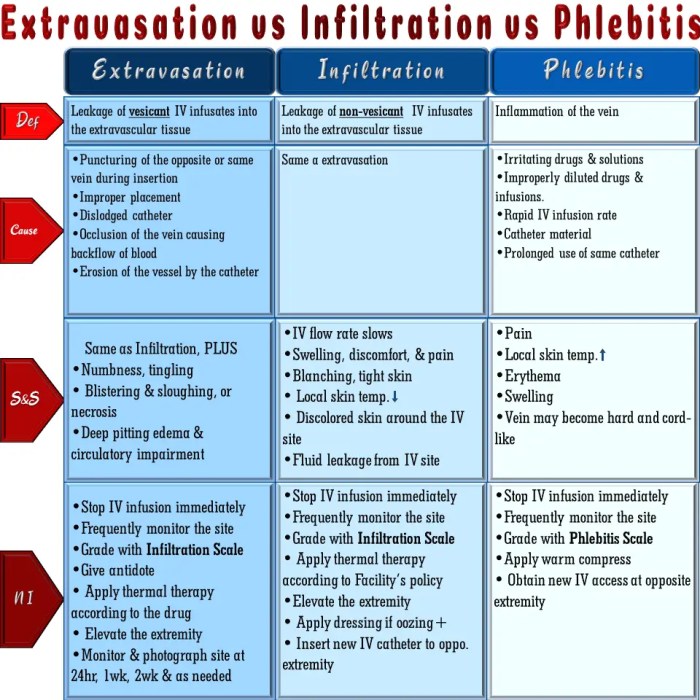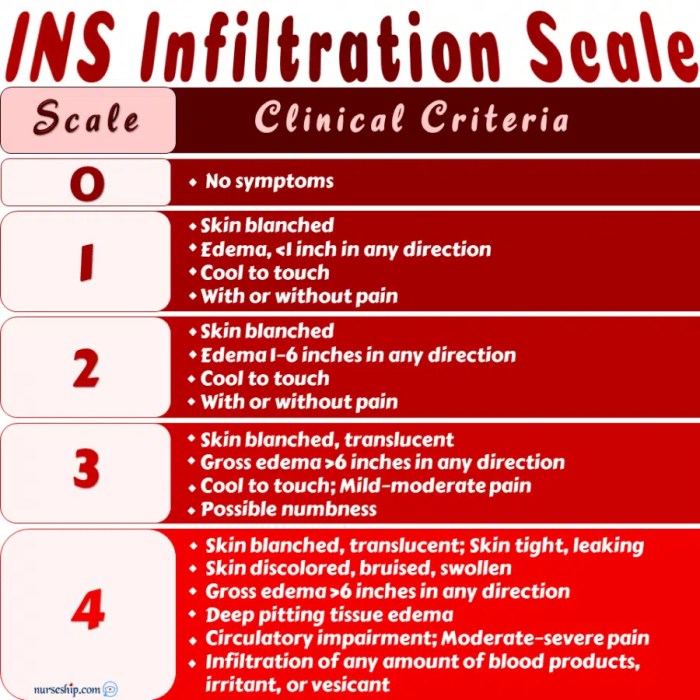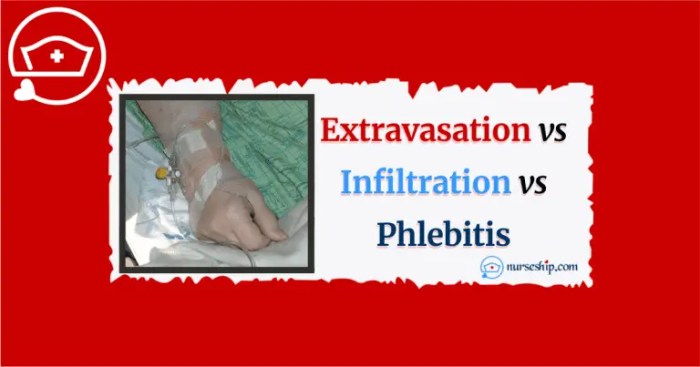Signs of phlebitis vs infiltration – In the realm of medical interventions, differentiating between phlebitis and infiltration is crucial for ensuring patient safety and optimal outcomes. Understanding the distinct signs and symptoms associated with each condition empowers healthcare professionals to make informed decisions and implement appropriate management strategies.
This comprehensive guide delves into the clinical manifestations of phlebitis and infiltration, providing a clear framework for accurate diagnosis and effective treatment.
Signs of Phlebitis vs Infiltration

Differentiating between phlebitis and infiltration is crucial in medical settings to ensure appropriate management and prevent potential complications. Phlebitis refers to the inflammation of a vein, while infiltration occurs when fluids or medications inadvertently enter the surrounding tissue during intravenous (IV) therapy.
Signs of Phlebitis
Phlebitis is characterized by several physical signs:
- Redness and swelling along the vein
- Tenderness to the touch
- A palpable cord or thickening along the vein
- Warmth or fever
Phlebitis can be caused by various factors, including IV catheter insertion, trauma, infection, and certain medical conditions.
Signs of Infiltration
Infiltration is indicated by the following signs:
- Leakage of fluid into the surrounding tissue, causing swelling and blanching
- Blanching or paleness of the skin around the injection site
- Pain or discomfort at the injection site
- Extravasation of medication, leading to potential tissue damage
Infiltration can have serious consequences, such as tissue necrosis, infection, and compartment syndrome.
Differential Diagnosis, Signs of phlebitis vs infiltration
The following table summarizes the key signs and symptoms of phlebitis and infiltration:
| Feature | Phlebitis | Infiltration |
|---|---|---|
| Pain | Tenderness along the vein | Pain or discomfort at the injection site |
| Swelling | Along the vein | Surrounding tissue |
| Redness | Along the vein | Blanching of skin |
| Palpable cord | Yes | No |
| Fluid leakage | No | Yes |

